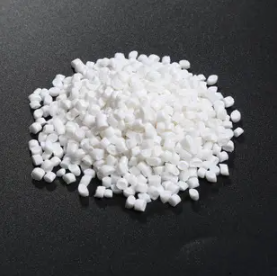The COVID-19 has lasted for 3 years, and masks have become an indispensable part of our daily life. As the heart of the mask, the meltblown non-woven fabric determines whether the mask has a very high virus filtering effect. Do you know what factors affect the quality of meltblown nonwovens? Do you know how SUNTECH's non woven machine controls the quality of meltblown cloth?
I. Choosing the well Meltblown Polypropylene Material
As the best barrier layer for masks, meltblown cloth is an extremely fine material, and the interior is made up of many criss-cross microfibers stacked in random directions. The melt-blown PP material with a melting index of 1500 is selected. The finer the wire drawn during melt-blown processing, the better the filtration performance. At the same time, it is necessary to consider whether a third-party test report of the melt-blown material can be provided.

II. Melting temperature, screw extrusion speed
Under the condition of constant melting temperature, the screw extrusion rate should be kept within a certain range: before a certain critical point, the faster the extrusion rate, the higher the quantitative melt-blown cloth, and the greater the strength. When the critical value is exceeded, the strength of the meltblown cloth decreases, especially when MFI>1000. If the extrusion rate is too high, the drafting of the filament is insufficient and the filament is serious, which may lead to a decrease in the bonding fibers on the cloth surface and a decrease in the strength of the melt-blown cloth.
III. Thermal jet angle
The hot air injection angle mainly affects the stretching effect and fiber morphology. Smaller angles encourage the thin streams to form parallel fiber bundles, resulting in poor nonwoven uniformity. If the angle tends to 90°, a highly dispersed and turbulent airflow will be generated, which is conducive to the random distribution of fibers on the condensed mesh curtain, and the final meltblown cloth has good anisotropic performance.
IV. Thermal air volume and wind speed
Under the same conditions of temperature, screw speed and receiving distance (DCD), the faster the hot air speed, the smaller the fiber diameter, the softer the non-woven fabric feels, and the more the fibers are entangled, resulting in a denser and smoother fiber web and have higher strength .
V. Receiving distance
An excessively long receiving distance will lead to a decrease in longitudinal and lateral strength and bending strength, and the non-woven fabric will feel fluffy, which will lead to a decrease in filtration efficiency and filtration resistance in the melt-blown process.
VI. Meltblown Die
The design and precision of the meltblown die directly affect the length, uniformity, toughness, fineness and many other aspects of the wire drawing, which have a decisive impact on the final coil quality.
VII. Sufficient addition of electret masterbatch and electrostatic electret treatment
High-voltage corona treatment can make the melt-blown fibers have a lasting electrostatic charge, so that the melt-blown cloth has an additional electrostatic adsorption effect without hindering breathing. After electret treatment, the filtration can be improved to 95% (that is, N95 mask standard: the filtration efficiency of particles with aerodynamic diameter physical diameter of 0.075µm ± 0.020µm can reach more than 95%).
SUNTECH knows these factors are well, so we have taken all of them into consideration when designing our machines.SUNTECH's melt-blown non woven machinery adopts the same technology as Japan's melt-blown die head, which has high precision and can produce uniform, stable and soft melt-blown cloth. And it pays great attention to the automatic production of the machine, using automatic material suction, automatic stirring, automatic roll changing and other automatic devices to improve the stability of the machine production. If you are interested, please contact us immediately: sales@suntech-machinery.com
.png)




